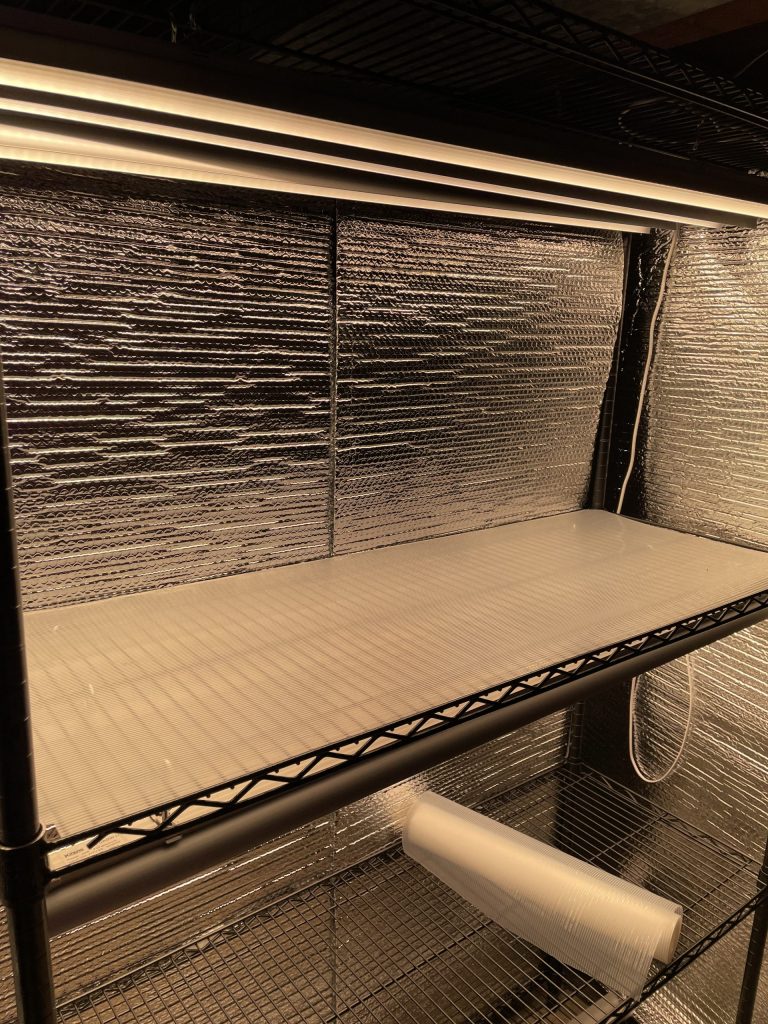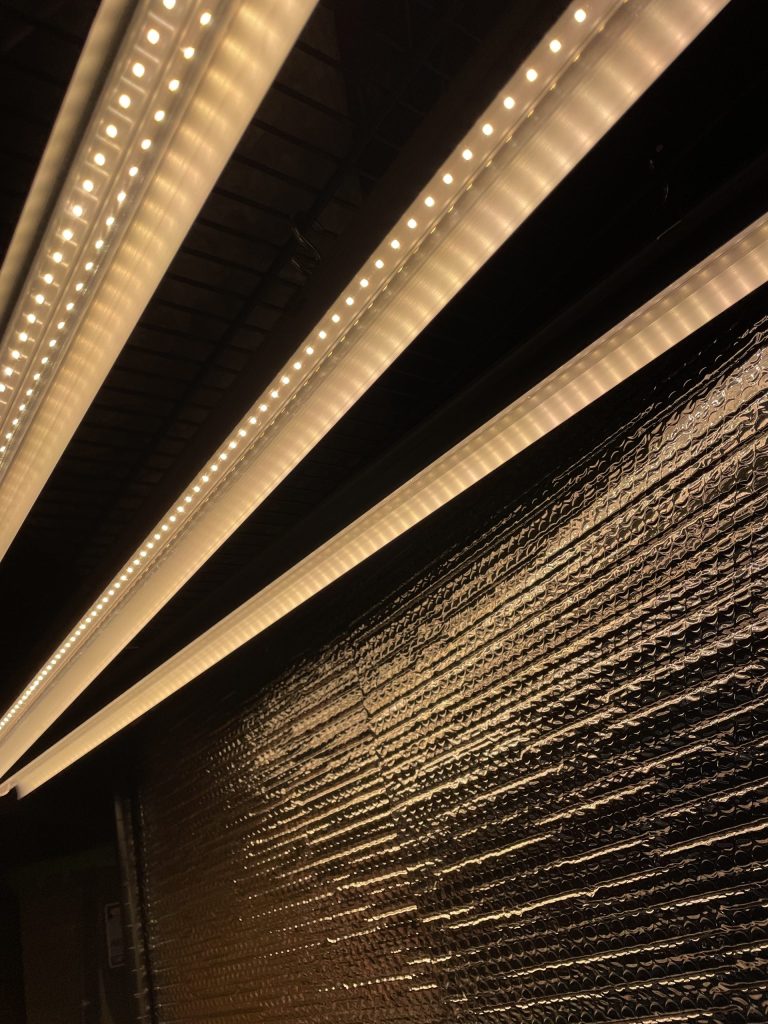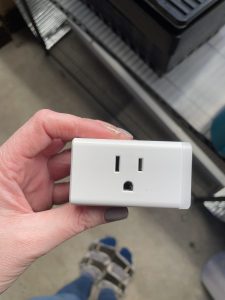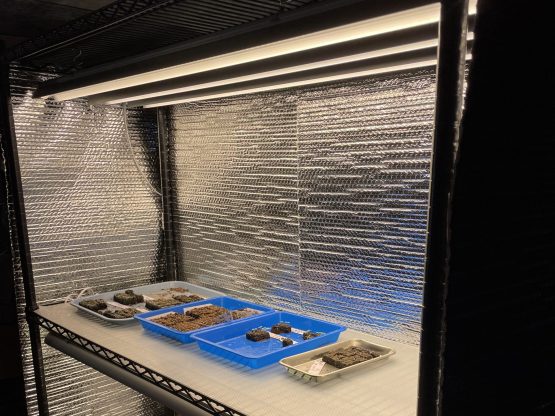Every year when seed-starting season begins, I get asked to share my seed starting rack setup. So here is a detailed breakdown of how I have setup my indoor seed starting rack.
(This post contains affiliate links that help support my content creation efforts. I greatly appreciate your support)
1. The Rack
The rack is the basis of the whole operation. It needs to carry a lot of weight and also needs to be flexible enough to attach the supporting equipment like lights and fans on it. I chose a wire rack for my setup. The wire shelfs are perfect to attach lights with hooks and you can choose the necessary shelf heights based on the lights you use. Make sure you compare prices, all big box stores carry this type of shelf. Target has been the cheapest for while. (I am considering adding a second shelf 😉 )
I recommend to add drawer liner on top of the shelfs: It is non-slip and prevents that you accidentally spill any water on the lights below. The liner also makes cleaning up easy and you can cut them in to shape to perfectly fit your shelf.

Depending on your shelf location, you should also consider some insulation to maintain the heat more stable. My shelf is located in an unfinished basement which usually runs around 55-60F in February and March. That can make it unnecessarily difficult to start summer vegetable like peppers or tomatoes. So, I added aluminum insulation, which you can usually find in the home insulation aisle at Lowe's or Homedepot.
2. Lights
'What lights do you use?' - Is probably the single most asked question I get regarding my seed starting rack. The options out there are plenty, which just feeds to the overwhelm and confusion around the topic. I have a box full of various different lights I tried and didn't like. The main difference between lights these days is: Incandescent or LED?
Incandescent Lights
Incandescent lights also known as the classic shop lights, can be used for seed starting, but need to be mounted close to the seedlings to provide the necessary light strength. They also emit more heat and consume more energy. They are fairly cheap to buy at any of the big home improvement stores, but don't last as long as LEDs. The lack of energy efficiency and the need to move them often as seedlings grow, were reasons for me to focus on the LED options from the beginning.
LED Grow Lights
There are SO MANY options for LED grow lights, just open amazon and search for LED grow lights and you find pages on pages of options. The main difference between the options are the number and the quality of diodes provided and what color spectrum they serve. Different color spectrums are necessary for seedling growth vs. fruiting stage of a plant. After 2 rather cheap and weak lights, I over corrected and bought a lamp which cannabis growers use for indoor growing. Let's just say, that a lot of seedlings would have needed sunscreen.
Then I bought some the Kihung LED grow lights during the Black Friday sale in 2021 and used those all of my 2022 seed starting season. I am happy to report, that I am very happy with those lights and seedling results.

LED lights don't have to be moved for the seedlings, as they are usually more powerful as shop lights. Therefore, you can mount them to the shelf permanently. For these lights, the manufacturer recommends 18 in minimum difference to plant surface. It is important to consider the height difference which seedling pots provide, so I have my lights mounted at a 24" heights to allow for optimal space. More isn't always better: Too much light, stresses the seedlings and can burn them, literally.
The more mature seedlings are usually more light tolerant, so they are usually fine when they grow closer to the lights. That I can't recommend to let them grow that large, that they get very close to LED lights or they burn again. I started my tomato seedlings last year a tad too early and ended up with 2 ft tall seedlings, which were right under the lights and got burned spots on their leaves.
3. Smart Setup
I love using technology to make my life easier and Wifi-Plugs are the next to magic when it comes to automate and schedule electronics. I have the grow lights of every shelf on one wifi plug, because I don't have all shelves on early in the seed starting season and use the Kasa Plugs with their app to set up my lights schedule.

The lights turn on at 5 am and turn off at 11 pm. You can even connect them to your Alexa or Google Home and voice control them. We use these plugs for all kind of purposes in our house.
For more information...
... Check out my YouTube Video on the topic or dig into my post about soil blocking to get your seed starting off to a great start!

